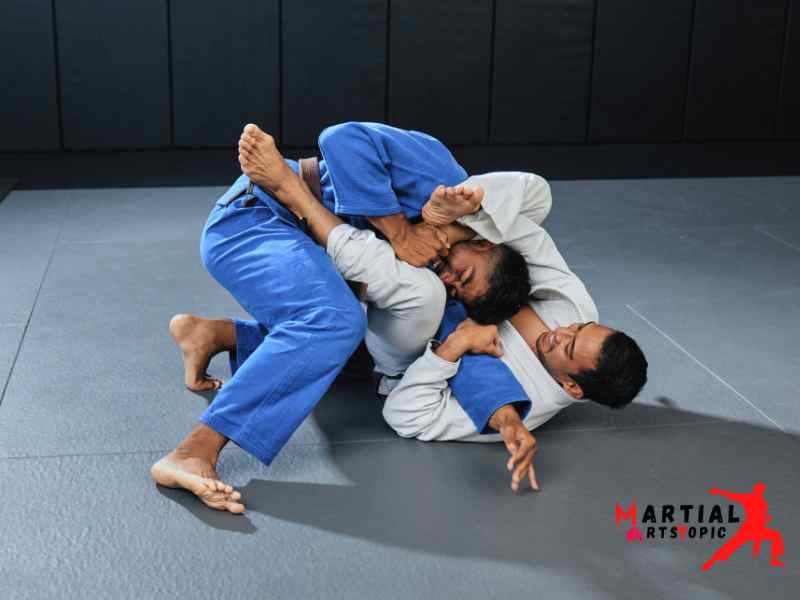
The History and Evolution of Grappling Sport
Grappling, an intense and dynamic sport, has a rich and captivating history that spans across cultures and centuries. From its origins in ancient martial arts to its modern-day popularity, grappling has developed into a widely recognized and respected combat sport. In this blog post, we will delve into the intriguing journey of grappling, exploring its historical roots, significant milestones, and the transformations that have shaped it into the captivating sport we know today.
Ancient Origins – The Birth of Grappling
Grappling finds its origins in ancient civilizations, where it was a fundamental part of combat training. Archaeological evidence suggests that ancient Egyptians, Greeks, and various Eastern cultures employed grappling techniques. These ancient forms of grappling were integral to warfare and self-defense, with warriors utilizing intricate holds and techniques to overpower their opponents.
The Rise of Grappling Martial Arts
As civilizations advanced, grappling techniques became refined and were incorporated into various martial arts systems. In ancient Greece, Pankration emerged as a full-contact combat sport that combined striking and grappling techniques. Pankration gained immense popularity during the Olympic Games and became a symbol of physical prowess.
In Eastern cultures, traditional martial arts such as Judo, Jiu-Jitsu, and Sambo developed, each with its unique set of grappling techniques and principles. These martial arts placed equal emphasis on control, leverage, and submission holds, setting the foundation for the modern-day sport of grappling.
Grappling in Modern Times
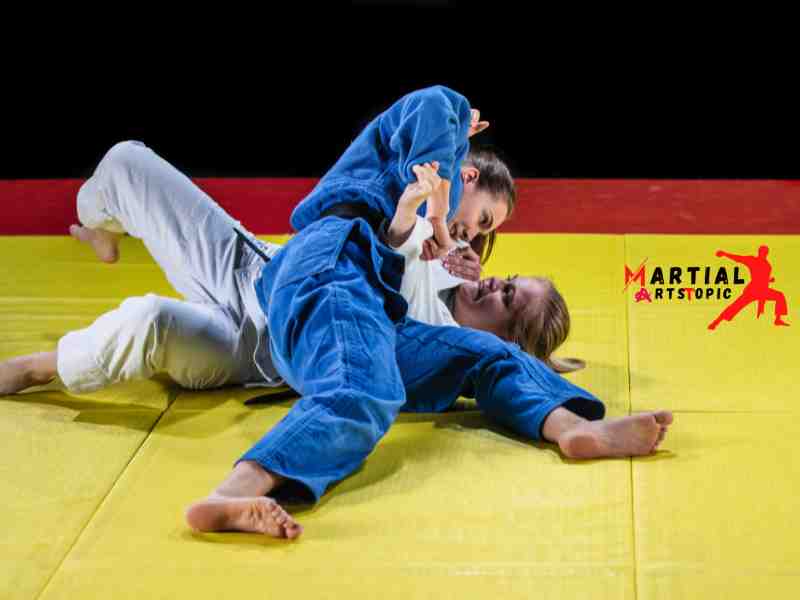
The sport of grappling as we know it today began to take shape in the late 19th and early 20th centuries. Maeda Mitsuyo, a Japanese judoka, traveled the world, showcasing his exceptional grappling skills. Maeda’s journey brought him to Brazil, where he encountered Carlos Gracie, a Brazilian martial artist, who would later become the founder of Brazilian Jiu-Jitsu (BJJ).
Carlos Gracie, along with his family, further refined the techniques of Jiu-Jitsu, focusing on leverage and ground fighting, which allowed smaller individuals to overcome larger opponents. This shift in approach gave rise to the concept of “the gentle art,” where technique and skill triumphed over brute strength.
Mixed martial arts (MMA) in the 1990s played a crucial role in popularizing grappling as a standalone sport. As MMA fighters showcased their grappling skills in the cage, the sport gained recognition and a wider audience. Organizations such as the Ultimate Fighting Championship (UFC) introduced grappling tournaments, further solidifying its place in the combat sports landscape.
Modern Grappling: A Global Phenomenon
In recent years, grappling has experienced an explosion in popularity, with tournaments and championships held worldwide. Competitors from diverse backgrounds, including judo, Brazilian Jiu-Jitsu, wrestling, and Sambo, showcase their skills on the mat, mesmerizing audiences with their technical prowess and strategic brilliance.
The sport of grappling continues to develop, incorporating elements from various disciplines to create a dynamic and ever-develop competition format. Grappling enthusiasts can now witness high-level matches in events such as the ADCC (Abu Dhabi Combat Club) and the IBJJF (International Brazilian Jiu-Jitsu Federation) World Championships.
Top 10 Essential Grappling Techniques Every Beginner Should Know
Are you a beginner looking to dive headfirst into the thrilling world of grappling sports? Look no further! In this comprehensive guide, we will explore 10 essential grappling techniques that every beginner should know. Whether you’re interested in Brazilian Jiu-Jitsu, wrestling, or any other form of grappling sport, mastering these techniques will lay a solid foundation for your journey towards becoming a skilled grappler. So, grab your gi and let’s get started!
The Guard
The guard is one of the fundamental positions in grappling sports. It involves being on your back with your legs wrapped around your opponent’s waist or torso. Mastering the guard allows you to control and neutralize your opponent’s attacks, providing you with various submissions and sweep opportunities.
Side Control
Side control is a dominant position where you are perpendicular to your opponent, pinning them to the ground. Learning to maintain control and transition from side control is crucial for executing submissions and advancing your position.
Mount
They achieved the mount position when you are sitting on top of your opponent, straddling their torso. It’s a highly advantageous position that allows for powerful strikes, submissions, and transitions to other dominant positions.
Rear Naked Choke
The rear naked choke is a lethal submission technique that targets your opponent’s neck. By applying pressure to the carotid arteries, you can render your opponent unconscious or force them to tap out. Mastering this technique requires proper positioning and a deep understanding of leverage.
Armbar
The armbar is a joint lock that hyperextend your opponent’s elbow joint. They can execute it from various positions, such as the guard or the mount. Learning to control your opponent’s arm and apply the necessary leverage is vital for executing a successful armbar.
Triangle Choke
The triangle choke is a versatile submission technique that can be executed from the guard or while transitioning between positions. It involves trapping your opponent’s head and arm using your legs, cutting off their blood circulation and air supply, forcing them to submit.
Double Leg Takedown
The double leg takedown is a powerful technique commonly used in wrestling and Brazilian Jiu-Jitsu. It involves shooting in on your opponent’s legs, driving through them, and securing a takedown. Mastering this takedown will give you an advantage in controlling the fight and transitioning to dominant positions.
Kimura Lock
The Kimura lock is a shoulder lock that applies pressure on your opponent’s shoulder joint. They can execute it from various positions, including side control and the mount. Learning to isolate your opponent’s arm and apply the necessary leverage is key to successfully executing the Kimura lock.
Guillotine Choke
The guillotine choke is a submission technique that targets the opponent’s neck. They can execute it from various positions, including the standing position or when your opponent tries to shoot in for a takedown. Understanding the mechanics and proper grip placement is crucial for a successful guillotine choke.
Sprawl
The sprawl is a defensive technique used to counter an opponent’s takedown attempt. By sprawling your legs back and pushing your hips down, you can defend against a double leg or single leg takedown. Mastering this technique will make it more challenging for your opponent to take you down and give you the opportunity to counter-attack.
Grappling for Beginners: A Step-by-Step Guide to Getting Started
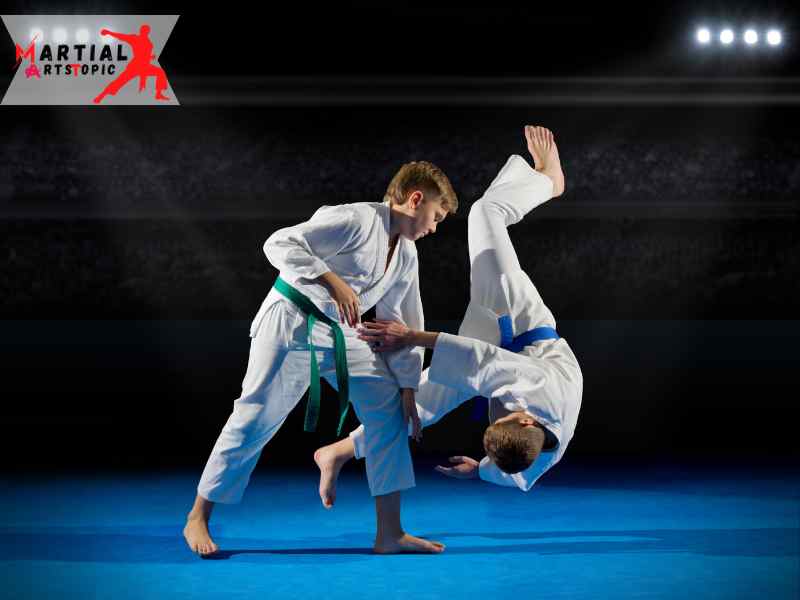
Grappling for Beginners: A Step-by-Step Guide to Getting Started If the world of martial arts has ever intrigued you and combat sports, grappling is a discipline worth exploring. With its roots in ancient combat techniques, grappling has developed into a popular sport that requires strength, technique, and mental focus. Whether you’re looking to build self-defense skills, improve your physical fitness, or simply try something new, this step-by-step guide will help you navigate the world of grappling and get started on your journey.
What is Grappling?
Grappling is a combat sport that involves close-quarter fighting and the use of techniques such as throws, holds, locks, and submissions. It emphasizes controlling an opponent through various grappling positions, including standing, clinching, and ground fighting. They can practice grappling as a standalone sport or as part of mixed martial arts (MMA) training.
Getting Started with Grappling
- Find a Grappling Gym or Club: Start by researching and locating a reputable grappling gym or club in your area. Look for facilities that offer classes specifically focused on grappling or Brazilian Jiu-Jitsu (BJJ), as it widely recognized these disciplines for their effectiveness in ground fighting.
- Dress Appropriately: When attending your first grappling class, it’s essential to wear the appropriate attire. Most grappling gyms require students to wear gi (a traditional martial arts uniform) or a rash guard and shorts. Wearing a mouth guard is also recommended to protect your teeth during training.
- Warm-up and Stretch: Before jumping into the action, it’s crucial to warm up your body and prepare it for the physical demands of grappling. Spend 10-15 minutes doing light cardio exercises like jogging or jumping jacks, followed by dynamic stretches to improve mobility and flexibility.
- Learn the Basics: Beginners should focus on learning fundamental grappling techniques and positions. This includes understanding how to break falls, perform basic takedowns, and control an opponent from various positions. Your instructor will guide you through these techniques, emphasizing proper body mechanics and safety.
- Practice Drills: Consistent practice is the key to improving your grappling skills. Dedicate time to drilling specific techniques and movements with a partner. This will help you build muscle memory and develop a deeper understanding of the techniques.
- Gradually Increase Intensity: As you gain confidence and skill, gradually increase the intensity of your training. Engage in controlled sparring sessions with training partners of varying skill levels. This will allow you to apply your techniques in a live scenario while still maintaining a safe environment.
- Focus on Conditioning: Grappling requires physical endurance, strength, and flexibility. Incorporate conditioning exercises into your training routine to improve your overall fitness. This may include cardiovascular exercises, weightlifting, and core strengthening exercises.
- Stay Consistent: Like any skill, grappling takes time to develop. Consistency is the key to progress. Attend classes regularly, set small goals for yourself, and celebrate each milestone along the way. Remember, the journey is as important as the destination.
Benefits of Grappling
Engaging in grappling as a beginner can have numerous benefits beyond physical fitness. Here are a few reasons why you should consider starting your grappling journey:
- Self-defense: Grappling provides valuable self-defense skills, teaching you how to control and neutralize an attacker, regardless of their size or strength.
- Mental Focus: Grappling requires mental fortitude and focus. It challenges you to think strategically, problem-solve, and stay calm under pressure.
- Full-body Workout: Grappling engages all major muscle groups, providing a comprehensive workout that improves strength, endurance, and flexibility.
- Stress Relief: The physicality of grappling and the camaraderie among training partners can serve as a stress reliever, helping you release tension and boost your mood.
Strength and Conditioning for Grapplers: Training Tips and Exercises
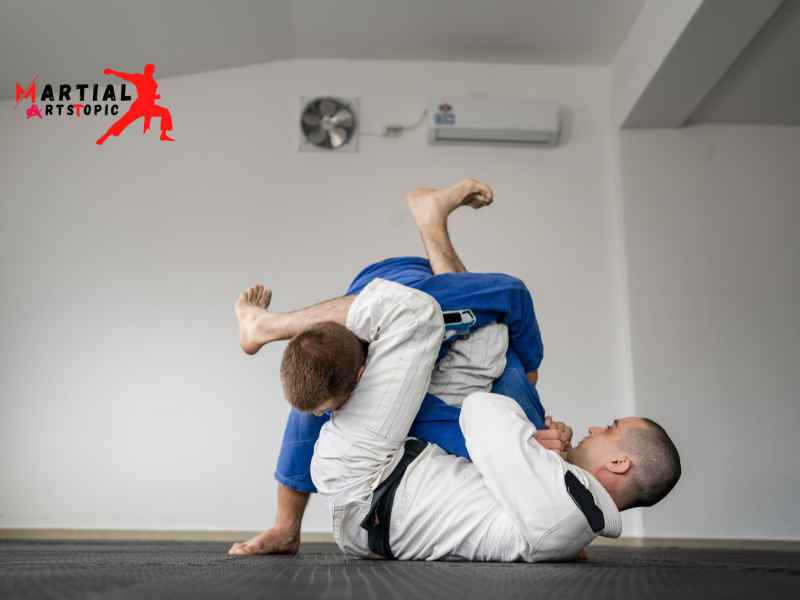
Strength and Conditioning for Grapplers: Training Tips and Exercises in the world of grappling sports, strength and conditioning play a vital role in enhancing performance and preventing injuries. Whether you are a seasoned grappler or just starting out, incorporating the right training tips and exercises into your routine can give you a competitive edge and help you reach your full potential on the mat. Some key aspects of strength and conditioning for grapplers, along with valuable training tips and exercises to take your grappling game to the next level.
Benefits of Strength and Conditioning for Grapplers
Grappling sports, such as Brazilian Jiu-Jitsu, wrestling, and judo, require a unique combination of strength, endurance, flexibility, and explosiveness. By incorporating a well-rounded strength and conditioning program into your training regimen, you can reap the following benefits:
- Increased Strength: Building strength is crucial for grapplers as it enables them to overpower their opponents, maintain control, and execute effective techniques.
- Enhanced Endurance: Grappling matches can be physically demanding and require sustained effort. Improving endurance will help you maintain a high level of performance throughout the entire match.
- Improved Flexibility: Flexibility is essential for executing various grappling techniques and preventing injuries. A flexible body allows for a wider range of motion and quicker transitions.
- Explosive Power: Developing explosive power is key for taking down opponents and executing dynamic movements, such as throws and sweeps.
Training Tips for Grapplers
Now that we understand the benefits of strength and conditioning for grapplers, let’s dive into some training tips to optimize your performance:
- Compound Exercises: Incorporate compound exercises into your training routine, such as squats, deadlifts, bench press, and pull-ups. These exercises engage multiple muscle groups simultaneously, mimicking the demands of grappling sports.
- Functional Training: Focus on exercises that mimic the movements and demands of grappling. This could include exercises like medicine ball slams, kettlebell swings, and battle ropes. These movements will help improve your overall coordination and athleticism.
- Plyometrics: Plyometric exercises, such as box jumps and clap push-ups, are excellent for developing explosive power. These exercises involve powerful, rapid movements that closely resemble the explosive actions required in grappling.
- Core Strengthening: A strong core is essential for grapplers, as it provides stability and power for various movements. Incorporate exercises like planks, Russian twists, and hanging leg raises to strengthen your core.
- Flexibility Training: Dedicate time to improving your flexibility through stretching exercises and mobility drills. This will help you move more efficiently on the mat, prevent injuries, and enhance your overall performance.
Exercises for Grapplers
Now that you have some training tips in mind, let’s explore a few specific exercises that are beneficial for grapplers:
- Barbell Squats: Squats are excellent for developing lower body strength and explosiveness, which are crucial for executing takedowns and maintaining a firm base.
- Push-ups: Push-ups are a staple exercise for building upper body strength, particularly in your chest, shoulders, and triceps. These muscles are heavily utilized during grappling movements.
- Medicine Ball Throws: Medicine ball throws are great for developing explosive power and rotational strength, which are essential for executing throws and takedowns.
- Resistance Band Pull-Aparts: This exercise targets the muscles of the upper back and shoulders, helping to improve posture and prevent imbalances.
- Yoga or Pilates: Incorporating a yoga or Pilates routine into your training can improve flexibility, mobility, and body awareness, all of which are essential for grapplers.
How to Choose the Right Grappling Gym for Your Training
Choosing the Right Grappling Gym: A Comprehensive Guide to Enhance Your Training. Are you passionate about the thrilling world of grappling sport? Do you want to take your skills to the next level and become a formidable grappler? If so, finding the right grappling gym is crucial for your training journey.
- Location and Accessibility: When searching for a grappling gym, it’s essential to consider its location and accessibility. Look for a gym that is conveniently located near your home, workplace, or school. This will make it easier for you to maintain a consistent training schedule without having to endure long commutes.
- Reputation and experience: The reputation and experience of a grappling gym are key factors to consider. Look for a gym that has a solid reputation in the grappling community, with experienced coaches and trainers who have a proven track record. A gym with a strong reputation is more likely to provide high-quality training and a supportive environment.
- Facilities and equipment: Check the facilities and equipment available at the grappling gym. Make sure they have ample training space, clean and well-maintained facilities, and a variety of high-quality equipment suitable for grappling sport. Having access to the right equipment will enhance your training experience and help you progress faster.
- Class Schedule and Flexibility: Consider the class schedule and flexibility offered by the grappling gym. Look for a gym that offers a wide range of class times to accommodate your busy schedule. Additionally, flexibility in terms of class cancellations, makeup classes, and different training options (e.g., open mats, sparring sessions) is crucial to ensure you have ample opportunities to train and improve.
- Coaching and instruction: The coaching and instruction provided at a grappling gym can make a significant difference in your training. Research the qualifications and experience of the coaches and instructors at the gym. Look for individuals who have a deep understanding of grappling sport and possess the ability to effectively communicate and teach techniques to students of all levels.
- Training Environment and Culture: The training environment and culture at a grappling gym play a vital role in your overall experience. Visit the gym and observe the atmosphere during training sessions. Look for a gym that fosters a positive, inclusive, and supportive environment, where students are encouraged to challenge themselves and grow as grapplers.
- Trial Classes and Membership Options: Before committing to a grappling gym, take advantage of any trial classes or introductory offers they may provide. This will give you an opportunity to experience the training firsthand and assess if the gym meets your expectations. Additionally, inquire about their membership options, including pricing, contract terms, and any additional fees to ensure they align with your budget and commitment level.
- Community and Networking: Consider the community and networking opportunities available at the grappling gym. Training in an environment with like-minded individuals can significantly enhance your motivation and passion for the sport. Look for a gym that organizes events, seminars, and competitions where you can interact with other grapplers and expand your network.
Grappling vs. Striking: Which Martial Art is Right for You?
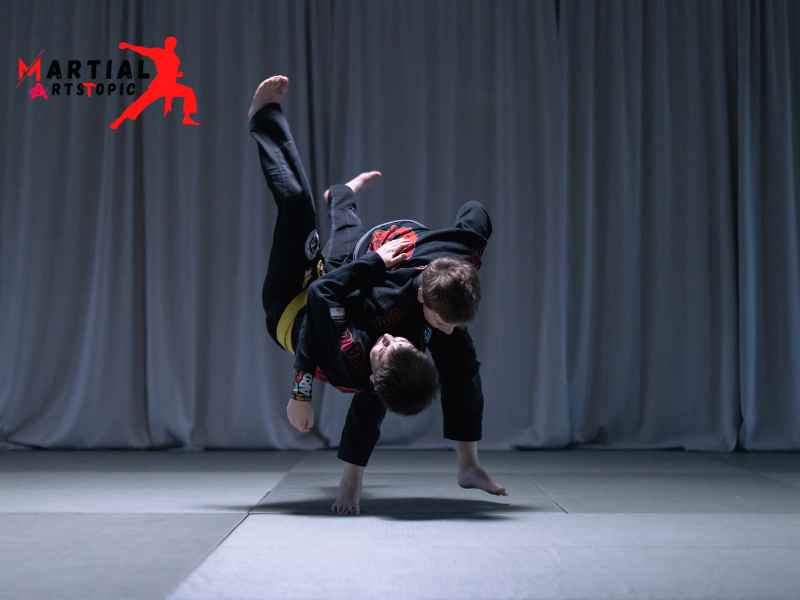
Grappling vs. Striking: Which Martial Art is Right for You?When it comes to martial arts, there are countless styles and disciplines to choose from. Each has its own unique techniques, strategies, and benefits. Two popular martial arts forms that often come up in discussions are grappling and striking. Both offer distinct advantages and can be incredibly effective in their own right. But how do you know which one is right for you?
Grappling, often referred to as a grappling sport, focuses on close-quarter combat and ground fighting techniques. It involves using various holds, locks, and submission techniques to control an opponent. The goal is to immobilize or force the opponent to submit. In grappling, the emphasis is on leverage, technique, and body positioning rather than brute force. Some popular forms of grappling sports include Brazilian Jiu-Jitsu, Judo, and wrestling.
Striking, on the other hand, is a martial art form that focuses on punches, kicks, elbows, and knees. It involves using striking techniques to deliver powerful blows to an opponent from a distance. Striking martial arts, like Muay Thai, Boxing, and Taekwondo, emphasize speed, agility, and precision in delivering strikes. The goal is to incapacitate the opponent by delivering strikes to vulnerable areas of the body.
So, which martial art is right for you? The answer ultimately depends on your personal preferences, goals, and physical attributes. Let’s inspect some factors to consider when making your decision.
- Personal Preferences: Do you enjoy close-quarter combat and the technical aspects of grappling, or do you prefer the adrenaline rush of striking from a distance? Understanding your personal preferences will help you determine which martial art form aligns better with your interests.
- Fitness and Conditioning: Both grappling and striking require a certain level of fitness and conditioning. However, grappling often involves more intense physical exertion due to the close-quarters nature of the sport. If you enjoy intense workouts and physical contact, grappling might be the right choice for you.
- Self-Defense: If your primary goal is self-defense, both grappling and striking can be effective. Grappling can give you the advantage of controlling an opponent in close-quarters situations, while striking can help you create distance and escape from potential threats. Consider the self-defense aspects of each martial art form when making your decision.
- Competition and Sport: If you’re interested in competing or participating in martial arts tournaments, both grappling and striking offer ample opportunities. Grappling sports like Brazilian Jiu-Jitsu and Judo have a strong competitive scene, as do striking sports like boxing and kickboxing. Consider the availability of competitions and tournaments in your area when deciding which martial art form to pursue.
- Injury Risk: It’s important to consider the injury risk associated with each martial art form. While injuries can happen in any sport, grappling sports, with their emphasis on joint locks and submissions, may have a higher risk of certain types of injuries. Striking, on the other hand, carries a higher risk of affected-related injuries. Be sure to take into account your own physical capabilities and any existing injuries or conditions when choosing a martial art.
Ultimately, the decision between grappling and striking comes down to personal preference, goals, and physical attributes. It’s always a good idea to try out both forms and see which one resonates with you more. Many practitioners even choose to train in both grappling and striking to have a well-rounded skill set. Remember, the most important thing is to find a martial art that you enjoy and that fits your individual needs.
In conclusion
Grappling sports offer a unique and dynamic form of physical activity that challenges both the body and the mind. With its emphasis on technique, strategy, and discipline, it provides numerous benefits for participants of all skill levels. From improved physical fitness and strength to increased mental focus and self-confidence, grappling sports have something to offer everyone. Whether it is for self-defense purposes, competitive aspirations, or simply the desire to engage in a challenging and rewarding hobby, grappling sports is a superb choice. So, if you’re looking for a sport that combines physicality, mental acuity, and personal growth, it’s time to step onto the mat and explore the world of grappling sports.
